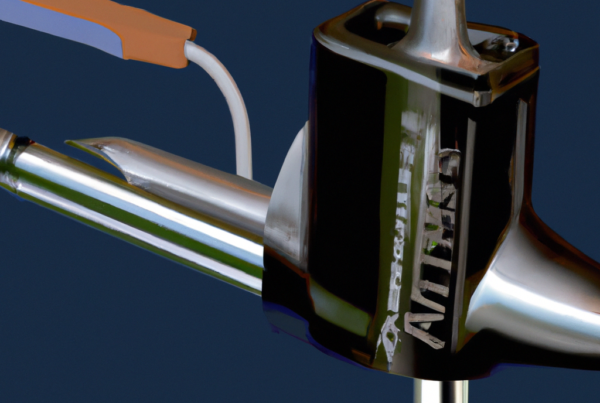Welding is a hazardous activity, and it’s important to make sure you’re protected from heat, sparks, and other dangers. Nylon clothing is not a suitable choice when welding, as it is highly flammable and can melt quickly and stick to your skin if exposed to heat. Not only that, but nylon fabric can create toxic fumes if exposed to flames, potentially causing serious harm to your health and well-being. For these reasons, it is important to wear flame-retardant clothing when welding to keep yourself safe.

What is welding?
Welding is a fabrication process that involves joining two or more metal pieces together, usually by melting them together. It is one of the most popular and versatile fabrication methods used in the manufacturing industry. Welding is used to build structures, such as bridges and buildings, as well as for repairs and maintenance. Welders use a variety of welding techniques to join metals, including arc welding, oxy-fuel welding, and tungsten inert gas (TIG) welding.
When welding, it is important to wear the proper safety gear to protect yourself from the intense heat, sparks, and fumes that may be generated. It is best to wear 100% cotton clothing, as it is non-flammable and will provide the best protection. Nylon clothing should not be worn when welding, as it is highly flammable and can easily catch fire when exposed to sparks or hot metal.
What type of materials are used for welding?
Welding requires a variety of materials, depending on the type of welding being done. Generally, welders use metals such as steel, aluminum, and copper to join two pieces together, although welding can also be done with plastics and other materials. Metals are usually joined together using an electric arc, which heats the metal to a high temperature, or with a gas flame.
When welding, it is important to wear appropriate clothing. Natural fibers such as cotton are best, as they will not melt or catch fire from the heat. Synthetic materials such as nylon should be avoided, as they can melt and stick to the skin if exposed to the high temperatures of the welding process. Additionally, synthetic materials can cause skin irritation, as they do not allow for proper ventilation.
What are the risks of wearing nylon clothing when welding?
It is not recommended to wear nylon clothing when welding as it is a synthetic material that can easily melt and ignite. Nylon does not provide any protection against sparks or spatter from welding, which can cause severe burns. Additionally, it is highly flammable and can easily catch fire if exposed to sparks or open flame. Nylon can also melt and stick to the skin, resulting in painful and severe skin burns.
Furthermore, the fumes released by welding can be hazardous when inhaled, and wearing nylon clothing can trap the fumes close to the body, putting the welder at risk of respiratory problems. Nylon clothing also does not provide any protection against ultraviolet radiation emitted by welders, which can cause skin irritation and even skin cancer.
In summary, it is not recommended to wear nylon clothing when welding due to its flammability and lack of protection against sparks, spatter, and ultraviolet radiation. Appropriate protective clothing such as welding jackets, gloves, and helmets should be worn when welding to ensure the safety of the welder.
How can nylon clothing catch fire when welding?
Nylon clothing should not be worn when welding as it can easily catch fire, as nylon is highly flammable. The heat generated by welding can ignite the material, leading to serious injury or even death. Nylon is also a synthetic material, meaning it is made up of many different chemicals that can produce toxic fumes when burned.
In order to prevent accidents, it is important to wear flame-resistant clothing when welding. There are many options available, such as leather, cotton, or wool. These materials are much less likely to catch fire, and some are even treated to be fireproof. Additionally, it is important to make sure that any clothing worn is free of loose threads or fraying, as these can also act as a wick for the flame.
In order to ensure a safe welding environment, it is important to wear the appropriate protective clothing. Nylon clothing should not be worn when welding, as it is highly flammable and can lead to serious injury or death. Flame-resistant clothing is the best option, as it will provide the necessary protection from the heat and flames generated by welding.
What are the alternative materials that should be worn when welding?
When welding, it is important to wear the right clothing for safety reasons. Nylon clothing should not be worn as it is highly flammable, and can catch fire quickly.
Cotton, wool, and leather are the best materials to wear when welding. Cotton is breathable and will not catch fire as quickly as nylon. Wool is also a good option, as it is resistant to heat and fire. Leather is the best choice, as it is highly heat resistant and fireproof.
When welding, always make sure to wear the right clothing for the job. Avoid nylon clothing, and opt for cotton, wool, or leather instead. This will ensure that you stay safe while welding.
How can wearing the correct clothing protect you when welding?
When welding, it is important to wear the correct clothing to protect yourself from sparks and heat. Natural fibers such as cotton and wool are generally the best choices as they are fire-resistant and provide some insulation. Synthetic fibers, such as nylon, should be avoided as they can melt when exposed to heat.
Wearing fire-resistant clothing and welding gloves helps protect your skin from heat and sparks. A welding helmet and face shield protect your face and eyes from molten sparks, and flame-resistant welding aprons and sleeves can provide additional protection. Additionally, wearing heavy-duty work boots helps protect your feet from sparks and heat.
Why shouldn’t you wear nylon clothing when welding? Nylon is a synthetic material and is not fire-resistant, meaning it could melt when exposed to welding sparks and heat. This could cause serious burns and other injuries.
What safety precautions should be taken to protect yourself when welding?
Safety precautions should always be taken when welding, as it can be a dangerous activity. Before beginning a welding job, it is important to make sure that all safety equipment is in place. Wear protective gear such as a welding helmet, gloves, and a long sleeved shirt or jacket. This will help protect your skin and eyes from sparks and hot metal. Also be sure to wear appropriate shoes that are non-flammable.
Additionally, it is important to make sure you are working in a well-ventilated area. This will help to reduce the risk of breathing in any toxic fumes from the welding. Make sure your environment is free of any combustible materials or flammable gases.
It is also important to never wear any clothing made of nylon when welding. Nylon can easily catch fire and cause serious burns if exposed to sparks from welding.
How can proper safety equipment help protect you when welding?
Using the proper safety equipment when welding is essential for protecting yourself from potential dangers. Wearing a welding helmet protects your face and eyes from sparks and molten metal, and welding gloves protect your hands from heat and sparks. Additionally, flame resistant clothing, such as leather and cotton, can help protect you from sparks and hot slag.
It is important to understand that nylon clothing should not be worn when welding. Nylon is not flame resistant, and therefore it can easily catch on fire when exposed to sparks and molten metal. Additionally, synthetic fibers that are produced from nylon are highly flammable and can cause serious burns.
By using proper safety equipment, you can minimize the risk of injury while welding. It is essential to understand the potential hazards of welding and to take the necessary precautions to protect yourself from injury. Wearing the right clothing and using the proper safety equipment can help ensure that you are welding safely and effectively.
What is the difference between welding with nylon clothing and welding with the correct materials?
Welding with the correct materials is essential for protecting yourself from the sparks and heat generated by the welding process. Wearing nylon clothing when welding is dangerous because it can easily catch fire and melt onto the skin. Nylon is a synthetic material that is not flame-resistant or heat-resistant, and it can easily melt or burn when exposed to the intense heat of the welding arc. This can cause serious burns and even injury.
In contrast, the proper protective clothing for welding consists of flame-retardant and heat-resistant materials that will protect the wearer from the sparks and heat generated by the welding process. This clothing is designed to withstand the extreme temperatures generated by welding and to protect the wearer from injury. It is important to wear the correct protective gear when welding in order to ensure safety.
What are the consequences of wearing the wrong clothing when welding?
When welding, wearing the wrong clothing can have serious consequences. Non-synthetic materials, such as cotton, are best for welding because they are less likely to catch fire. Synthetic materials, such as nylon, can quickly ignite with intense heat and flames, which can cause serious burns and even death. In addition, synthetic materials can also melt and stick to the skin, causing serious and sometimes permanent damage.
It is important to wear protective clothing when welding, such as a welding jacket or apron made of flame-resistant materials, and safety glasses or a face shield to protect against bright sparks and spatter. Wearing the wrong clothing can also lead to burns from sparks or spatter, as well as exposure to toxic fumes and gases.
Why shouldn’t you wear nylon clothing when welding? Nylon is highly flammable and can quickly ignite with intense heat and flames. It can also melt and stick to the skin, causing serious and sometimes permanent damage. Therefore, it is important to wear flame-resistant materials when welding to ensure safety.



